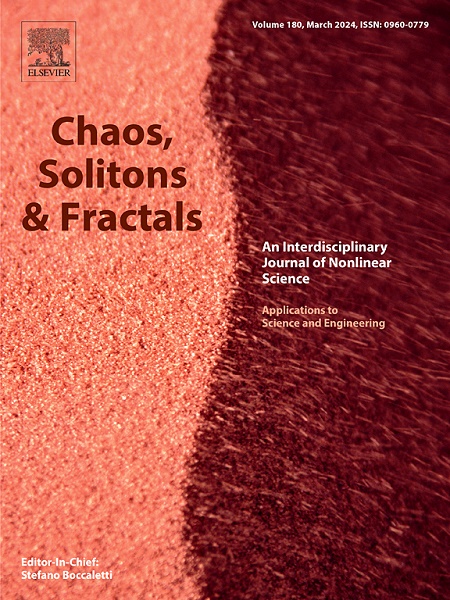Multilayer network framework and metrics for table tennis analysis: Integrating network science, entropy, and machine learning
IF 5.3
1区 数学
Q1 MATHEMATICS, INTERDISCIPLINARY APPLICATIONS
引用次数: 0
Abstract
This study introduces two novel metrics within table tennis technical-tactical networks: technical decision-making style (TDS) and connecting technical style (CTS), inspired by the entropy concept, to quantify players' technical-tactical styles. This study proposes a multilayer technical-tactical network framework to capture interactive information and technique-to-technique confrontations between players. Additionally, we develop four new metrics—absorbing rate, releasing rate, stalemate rate, and usage rate—based on three states within table tennis matches: scoring, losing, and stalemate, to analyze inter-links within these networks. The champion table tennis player, who won gold medals in both the 2016 Rio Olympics and the 2020 Tokyo Olympics, and his opponents were analyzed in 5054 technical actions during these events. Metrics such as TDS, CTS, out-degree centrality (ODC), and in-degree centrality (IDC) within the networks were calculated. We also created datasets for TDS, CTS, ODC, and IDC and employed six machine learning algorithms for modeling. The results indicate that nodes utilizing TDS and CTS demonstrate superior predictive accuracy for game outcomes compared to those using ODC and IDC. SHAP analysis revealed the feature importance in the best-performing models for TDS and CTS, revealing non-linear relationships between the TDS and CTS values of each key node and game outcomes. The analysis of the multilayer network offers insights into the dynamic interactions between the champion player and his opponents, enhancing our understanding of the key factors influencing match victories. By integrating network science, entropy, and machine learning, this study presents a comprehensive framework and practical metrics for match analysis, with potential implications in performance analyses of other racket sports.
乒乓球分析的多层网络框架和度量:集成网络科学、熵和机器学习
本研究在熵概念的启发下,在乒乓球技战术网络中引入了技术决策风格(TDS)和连接技术风格(CTS)两个新的指标,以量化运动员的技战术风格。本研究提出一个多层技术-战术网络框架,以捕捉玩家之间的互动信息和技术对技术对抗。此外,我们开发了四个新的指标——吸收率、释放率、僵持率和使用率——基于乒乓球比赛中的三种状态:得分、输球和僵持,以分析这些网络中的相互联系。在2016年奥运会和2020年东京奥运会上获得金牌的乒乓球冠军和他的对手在这些赛事中进行了5054个技术动作分析。计算了网络内的TDS、CTS、度外中心性(ODC)和度内中心性(IDC)等指标。我们还为TDS、CTS、ODC和IDC创建了数据集,并使用了六种机器学习算法进行建模。结果表明,与使用ODC和IDC的节点相比,使用TDS和CTS的节点对游戏结果的预测准确性更高。SHAP分析揭示了表现最佳的TDS和CTS模型的特征重要性,揭示了每个关键节点的TDS和CTS值与博弈结果之间的非线性关系。对多层网络的分析提供了对冠军球员和对手之间动态互动的洞察,增强了我们对影响比赛胜利的关键因素的理解。通过整合网络科学、熵和机器学习,本研究为比赛分析提供了一个全面的框架和实用的指标,对其他球拍运动的表现分析具有潜在的影响。
本文章由计算机程序翻译,如有差异,请以英文原文为准。
求助全文
约1分钟内获得全文
求助全文
来源期刊

Chaos Solitons & Fractals
物理-数学跨学科应用
CiteScore
13.20
自引率
10.30%
发文量
1087
审稿时长
9 months
期刊介绍:
Chaos, Solitons & Fractals strives to establish itself as a premier journal in the interdisciplinary realm of Nonlinear Science, Non-equilibrium, and Complex Phenomena. It welcomes submissions covering a broad spectrum of topics within this field, including dynamics, non-equilibrium processes in physics, chemistry, and geophysics, complex matter and networks, mathematical models, computational biology, applications to quantum and mesoscopic phenomena, fluctuations and random processes, self-organization, and social phenomena.
 求助内容:
求助内容: 应助结果提醒方式:
应助结果提醒方式:


